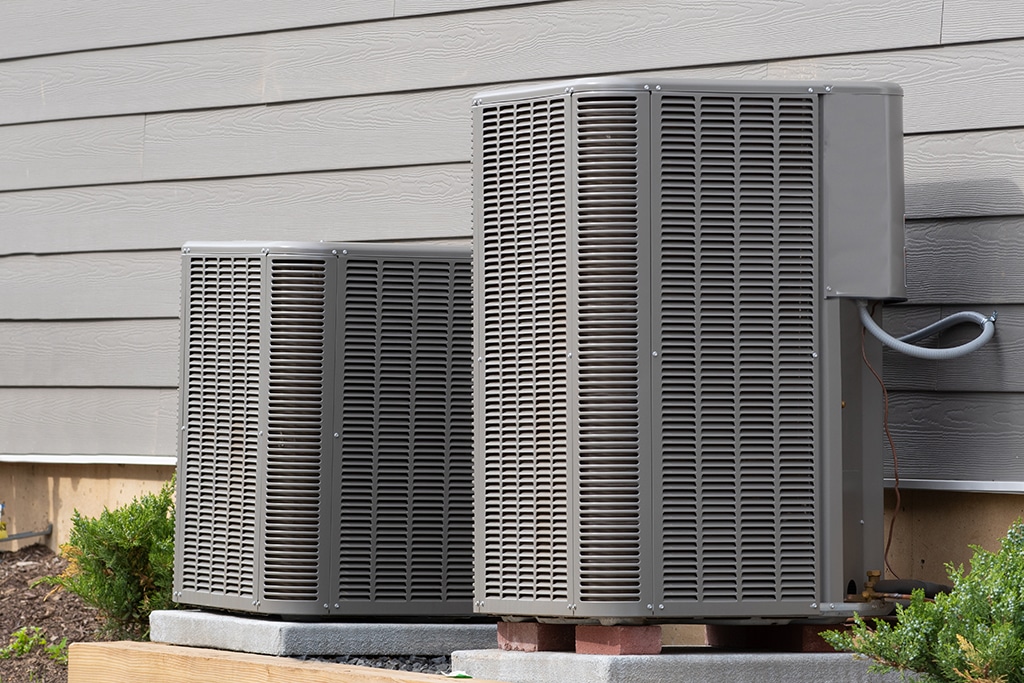
Why Call An Air Conditioning Service To Maintain Your Thermal Expansion Valve | Richardson, TX
Your air conditioning unit is a primary system that facilitates the comfort of your home. As a result, this system has many functioning parts and elements to keep your home’s environment to your standard and liking. These parts allow you to cool your home on a hot summer day. Unfortunately, most homeowners don’t think about or consider all these parts. If the air conditioning system is working and the temperature in the house is not compromised, the condition of the air conditioning unit is the last thing on their minds.
Unfortunately, this leaves you open to the last-minute rush of looking for an air conditioning service when your system breaks down. However, this does need to be the case. You can schedule a regular air conditioning service in Richardson, TX, to continuously maintain your air conditioning system. The technician will also care for all the functioning parts and elements, ensuring they operate efficiently. However, it is essential to know some significant components, such as the thermal expansion valve, how it functions, and the important signs your AC system will give if the thermal expansion valve fails.
What Is a Thermal Expansion Valve?
A thermal expansion valve, commonly referred to as a TVX or a TEV, is a throttling device found in your AC system that controls the amount of refrigerant liquid released to the system’s evaporator depending on the evaporator outlet pressure and temperature. The temperature varies with the evaporating pressure, which the system regulates through other means, like changing the compressor’s capacity.
Therefore, although commonly referred to as thermostatic, the thermal expansion valve does not restrict the evaporator’s temperature to a specific value. In addition, the thermal expansion valve also regulates the refrigerant’s superheat that flows from the evaporator to a steady valve. Therefore, although the thermal expansion valve is a small part of your air conditioning system, it plays an essential function in your home’s comfort.
Main Components of a Thermal Expansion Valve
As a homeowner, it is not advisable to open an air conditioning system. This is because the air conditioning system has many electrical components which, if you touch the wrong one, can either damage the system entirely or put your life in danger. Regardless, this does not mean you cannot know the parts in your system. It is best to contact an air conditioning service when your AC system malfunctions or stops working.
Inside the thermal expansion valve are the main components: the valve body, diaphragm, needle, sensing bulb, and capillary lines. All these work in harmony to ensure that your home is cooled effectively, meaning that you will have a comfortable indoor setting.
The Working Principle
After understanding its main components, the next step to better understand the thermal expansion valve in your air conditioning system is to know how these parts work together to give you the temperature you seek. Although an air conditioning service professional has adequate training to deal with the thermal expansion valve, gaining some knowledge of the components in your Richardson, TX, home never hurts.
During the operation of a thermal expansion valve, three forces ensure its efficient operation by acting on the diaphragm. These forces include the spring pressure, bulb pressure, and evaporator pressure. The bulb pressure, which originates from the sensing bulb mounted at the evaporator’s outlet, drives the diaphragm up during a decrease and down in an increase of suction temperature.
Spring pressure is calibrated by an air conditioning service or the manufacturer to a constant value. This pressure does not vary and acts vertically upwards on the diaphragm countering the bulb pressure. On the other hand, the evaporator pressure comes from the system’s evaporator load, which varies according to operating conditions. Thus, this pressure acts on the valve’s diaphragm vertically upward. Therefore, the valve will open or close depending on the balance between these three pressures.
During regular operation, the bulb pressure is balanced by the evaporator and spring pressure from the bottom of the diaphragm. Therefore, the opening of the valve depends on the bulb pressure, which depends on the refrigerant temperature in the sensing bulb. On the other hand, the closing of the valve depends on the evaporator pressure and the spring pressure, which rely on the saturation temperature of the evaporator’s coil refrigerant.
However, since an air conditioning service provider sets a constant spring pressure, the valve’s operation is essentially controlled by the difference between the saturation and the sensing bulb temperature. The temperature difference between these two is known as the degree of superheat. In addition, the superheat’s degree of the vapor refrigerant leaving the evaporator relies on the initial spring tension setting, which an air conditioning service can adjust.
Functions of a Thermal Expansion Valve
A thermal expansion valve performs the following primary function in your heating and air conditioning system;
It Keeps the Evaporator Active
A thermal expansion valve permits the refrigerant flow in your air conditioning system, depending on the cooling load inside. A high load increases the refrigerant flow, and when the load is low, it reduces the flow. The thermal expansion valve allows the evaporator to release depending on the system’s requirements, thus ensuring no waste of the evaporator’s capacity. Therefore, it constantly regulates the flow to maintain an adjusted superheat release from your Richardson, TX, home.
Reduction of Refrigerant’s Pressure
The other most important function of the thermal expansion valve is reducing refrigerant pressure from the condenser to the evaporator. Since the refrigerant has high pressure in the condenser, the thermal expansion valve drops the pressure to the evaporator level when the refrigerant passes through the orifice, which is a constriction. Due to the sudden drop in the refrigerant’s pressure, its temperature also drops, causing a cooling effect in the evaporator.
Allows the Flow of the Refrigerant Depending on Its Requirement
Another crucial function of the thermal expansion valve is allowing the refrigerant’s flow to the evaporator depending on the load. The adequate flow of the refrigerant prevents overloading the compressor with liquid refrigerant, facilitating the efficient working of the compressor, evaporator, and entire system. Hence, regular air conditioning service ensures that your TXV can regulate the refrigerant flow properly.
It Eliminates Compressor Breakdown Risk
Since the thermal expansion valve ensures complete vaporization of the liquid refrigerant in the evaporator, it eliminates the possibility of liquid refrigerant particles from reaching the compressor, which can cause a compressor breakdown. Therefore, it ensures that your Richardson, TX, home is comfortable all year through.
Types of Thermal Expansion Valve
There are two main thermal expansion valves: the internally and the externally equalized thermal expansion valve. The difference between these two valves is how the evaporation pressure affects the position of the pin. In the externally equalized valve, the evaporator pressure acting on the diaphragm is the pressure at the outlet of the evaporator. In the internally equalized valve, the evaporator pressure is at the inlet of the evaporator. To know the type of valve in your air conditioning system, consult an air conditioning service.
Problems Causing Your Thermal Expansion Valve to Malfunction
Since your AC system comprises many parts and components, it is challenging to know the exact part causing the malfunction. However, knowing what can cause your Ac system to malfunction is also essential. You need an air conditioning service to perform your maintenance and repair.
Blocked Strainer
Regular cleaning and maintenance from an air conditioning service in Richardson, TX, is one of the essential aspects of the efficient operation of your AC system. Due to the small size of the thermal expansion valve, debris and other particles can easily get stuck, resulting in poor AC performance. The material on the valve could also limit or interfere with the refrigerant’s release leading to significant problems.
A professional AC technician can quickly fix a clogged valve since most thermal expansion valves include a strainer pulled out without having to remove the entire valve. The clog will disappear when an air conditioning service cleans the strainer after pulling it out. However, if the thermal expansion valve develops a frequent clogging problem, an AC technician might opt to replace the filter or the entire thermal expansion valve. Notably, one of the significant advantages of using a professional air conditioning service is that the repair time is minimal, and the technician will also offer tips on preventing blocked filters in the future.
Sensing Bulb Malfunction
The sensing bulb is one of the primary components of the thermal expansion valve since it reads the temperatures of the refrigerant leaving the thermal expansion valve. The extent to which the valve opens depends on the readings of the sensing bulb, which directly impacts the refrigerant level, cooling your home.
Therefore, if your system’s sensing bulb malfunctions, it compromises the opening and closing of the valve such that it could either open too much or not at all. There are a couple of reasons why a sensing bulb can malfunction. For starters, the bulb could be damaged, thus needing an air conditioning service. Secondly, the sensing bulb installation could have a vertical reading instead of the required horizontal reading, thus not reading the proper refrigerant temperatures. Finally, the sensing bulb mounting could be loose, resulting in poor readings and malfunctioning.
Although replacing the sensing bulb usually solves a malfunctioning thermal expansion valve, it is advisable to contact an air conditioning service for a full inspection of the sensing bulb. The technician will efficiently outline the cause of the problem and promptly fix it. Additionally, it would be best if you did not try to adjust or replace the thermal expansion valve, as many problems can occur.
Refrigerant Leaks
The other major cause of AC problems is refrigerant leaks. As outlined earlier, one of the main functions of the TEV is to limit the refrigerant’s amount that gets into the air conditioning system. However, when the thermal expansion valve malfunctions, your AC system may suffer from a refrigerant leak since it no longer limits the refrigerant. A leaking refrigerant might lead to issues with your AC system, such as a lack of cold air in your home and poor system performance.
Therefore, if you notice a lack of cold air in your house, the problem might be a malfunctioning thermal expansion valve. Additionally, frost or ice outside your AC systems pipes could indicate that the entire thermal expansion valve might need changing. Therefore, immediately contact a professional air conditioning service in Richardson, TX, to run a complete system diagnostic and replace the necessary parts to avoid further damage to your AC system. The technician will also measure your system’s refrigeration rate to ensure it has enough refrigerant to operate after the leak. An air conditioning service provider will also help restore your air conditioning system’s efficiency, improving your lifespan.
Overheating
Your thermal expansion valve can overheat due to a low refrigerant level, a blocked filter, or a malfunctioning sensing bulb. It can overheat due to the general malfunctioning of the thermal expansion valve components. When a thermal expansion valve overheats, it might produce too much superheat, impacting the TXV’s performance or destroying it. Therefore, scheduling regular maintenance and air conditioning service is crucial to prevent this.
The discoloration of the TXV is a major sign that your AC system will portray if the thermal expansion valve is overheating. However, if your system has discolored, the problem is severe, and the process is irreversible. Contacting an AC technician will ensure that the system will not get further damage since the technician will replace the entire thermal expansion valve system and determine the underlying cause.
Let Us Help Resolve the Issues with Your TXV
The best way to ensure your family gets a comfortable home to hide from the rest of the world is by having regular maintenance from an air conditioning service in Richardson, TX. To have your TXV resolved completely, contact us at One Hour Air Conditioning & Heating of Dallas.





